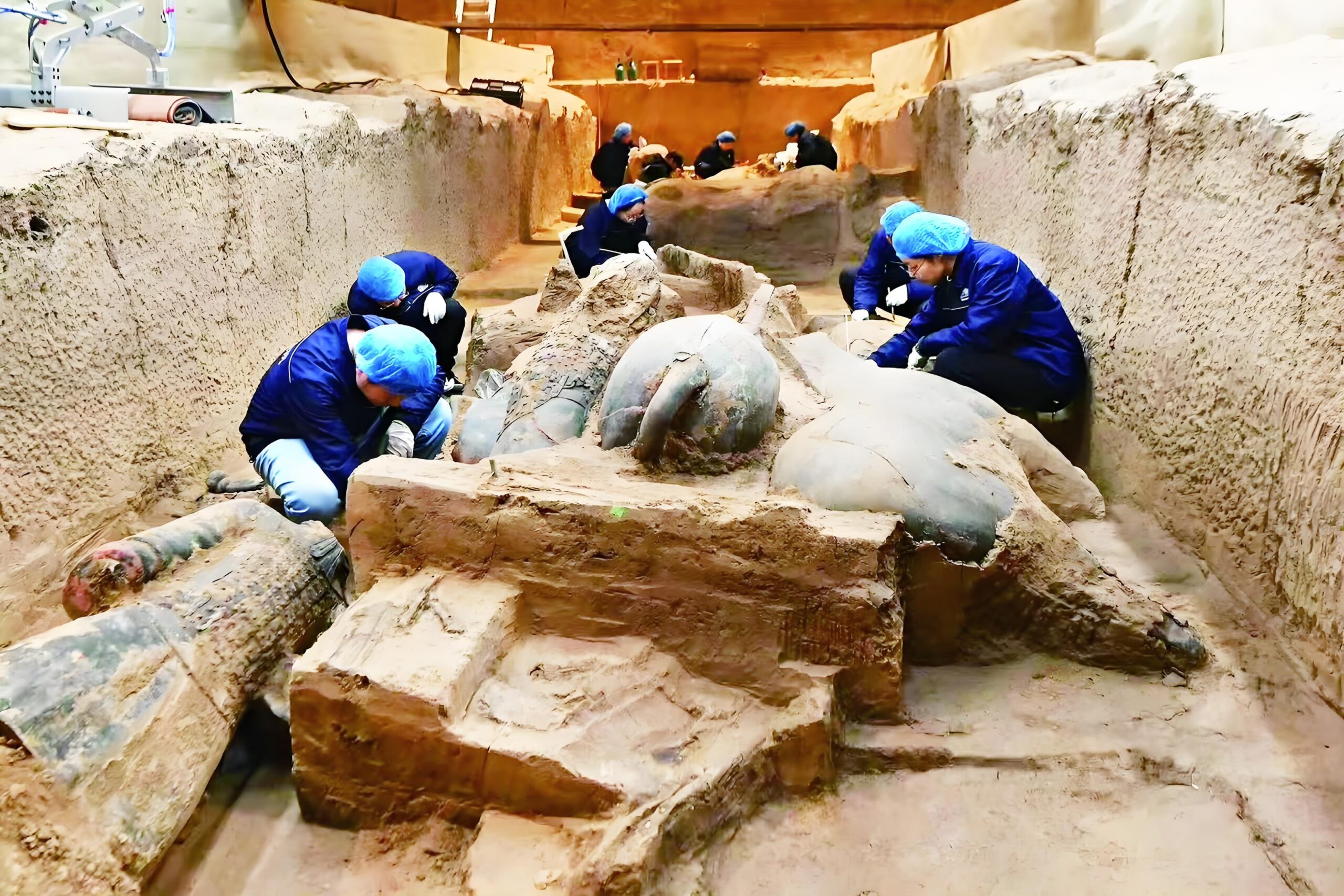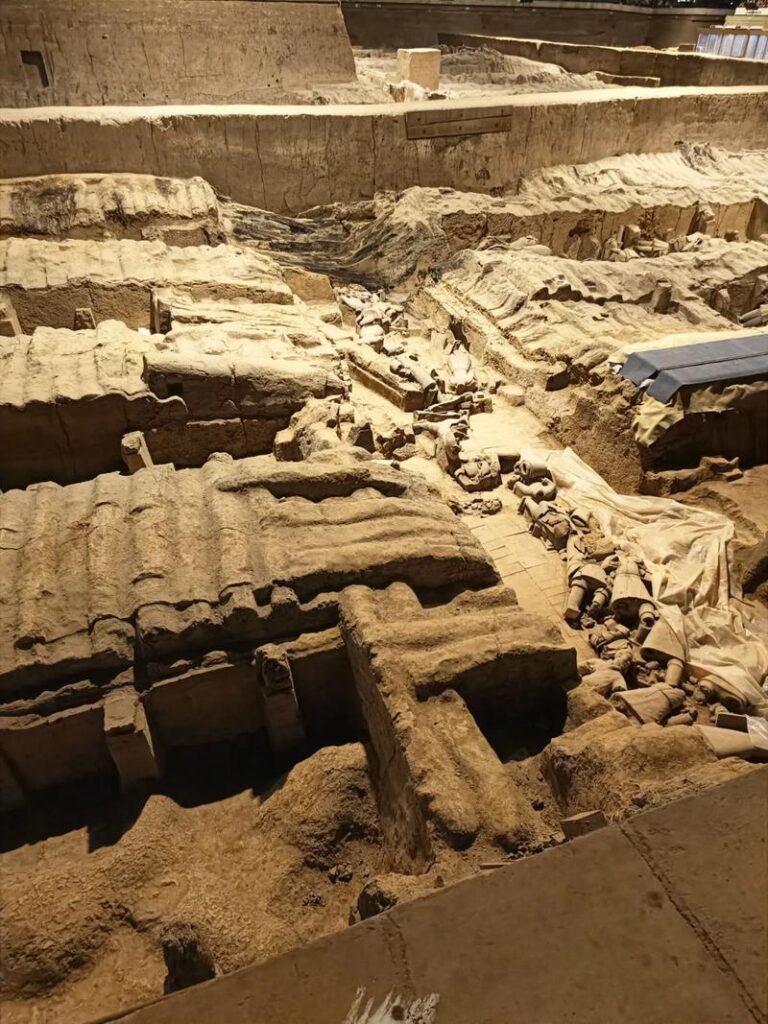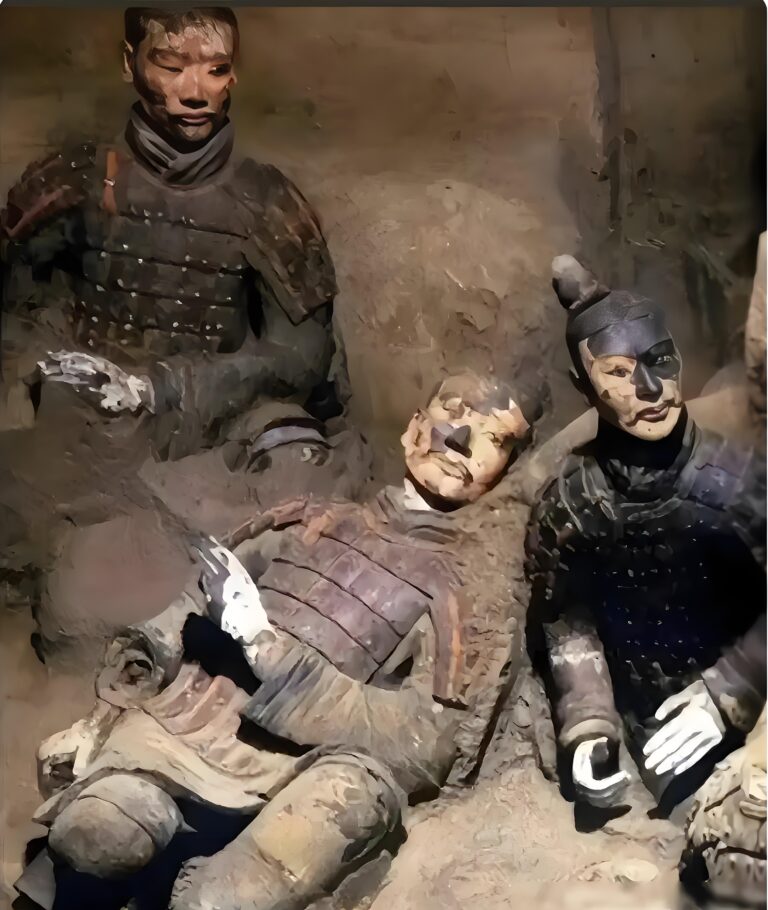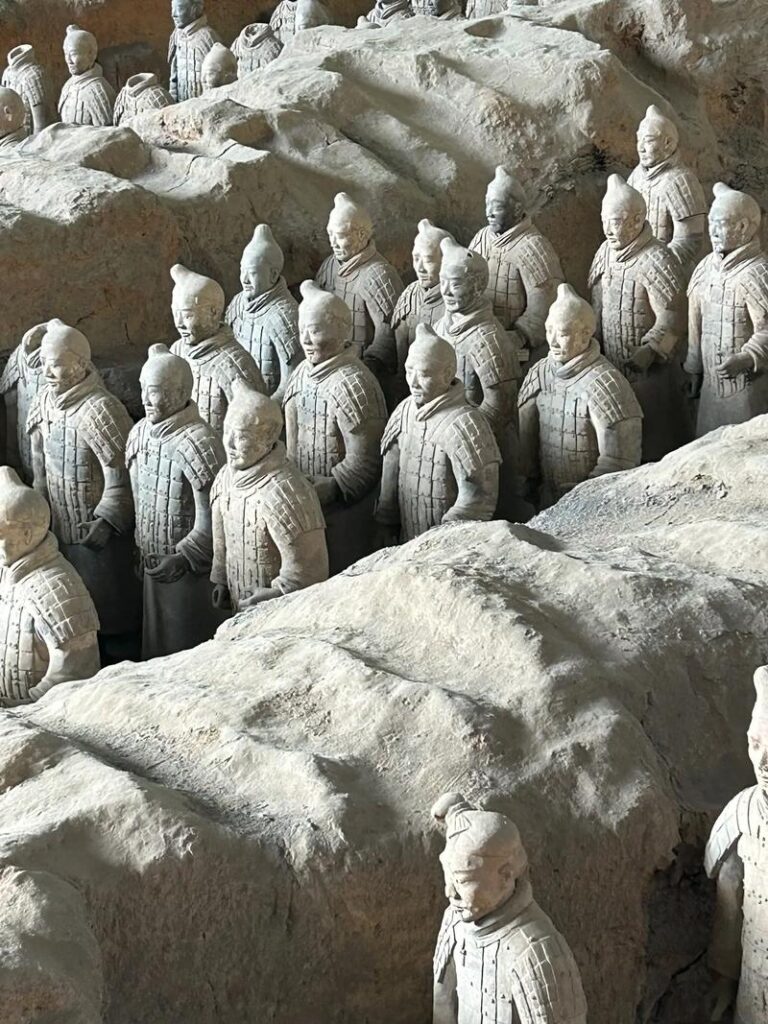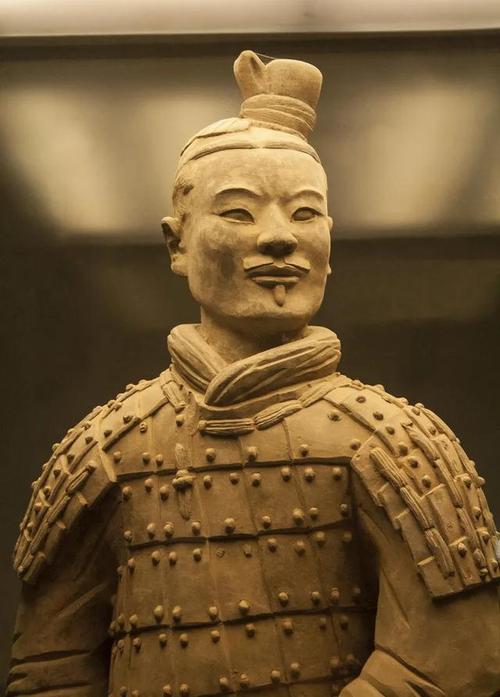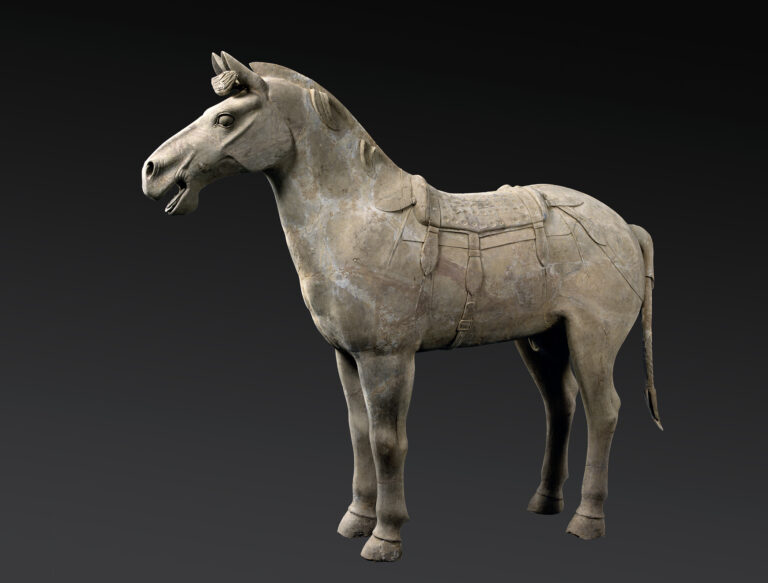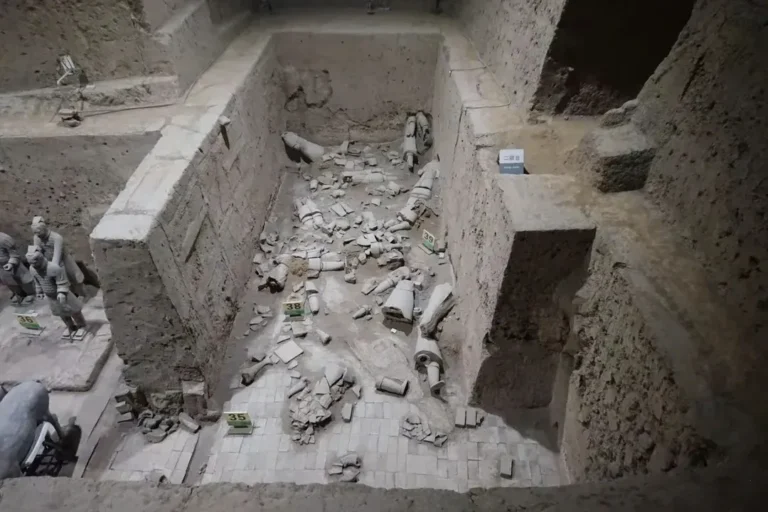What are 3 facts about Terracotta Warriors?
The Underground Army That Slept for a Thousand Years: Three Interesting Facts About the Terracotta Warriors
In 1974, in Shaanxi Province, China, some farmers digging a well for water accidentally unearthed a life-sized soldier’s head made of fired clay! They were astonished at the time, unaware that they had discovered a massive army buried underground for over 2,200 years. This was the “Terracotta Army of Emperor Qin Shi Huang,” which later shocked the world and is often referred to as the “Eighth Wonder of the World.”
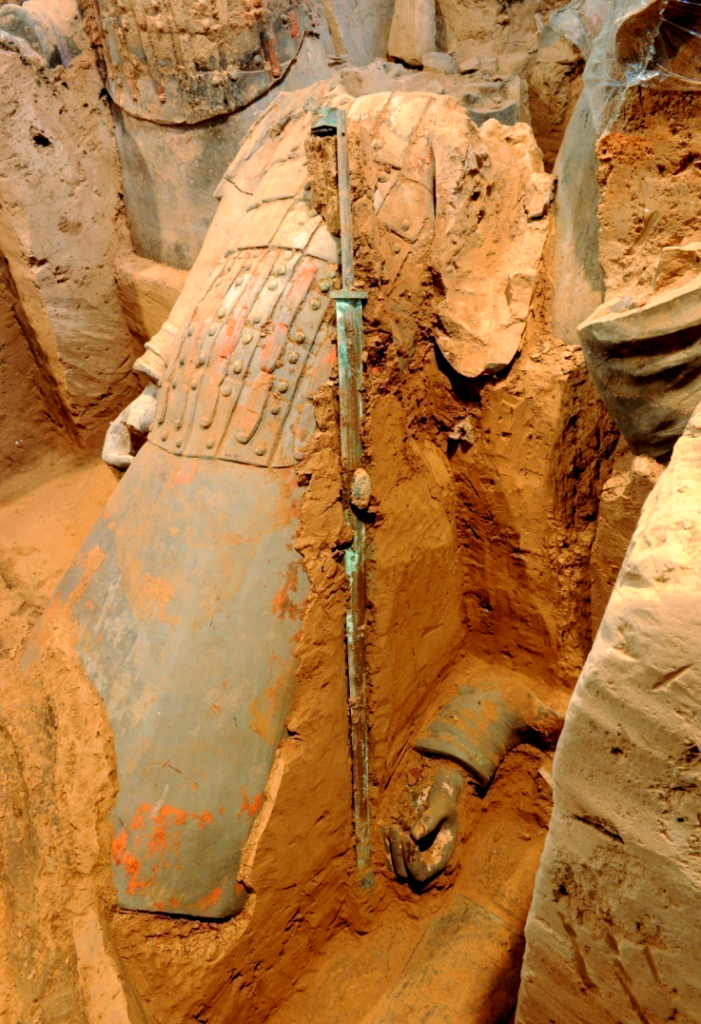
These terracotta warriors were burial offerings for China’s first emperor, Emperor Qin Shi Huang. He lived over 2,000 years ago (roughly contemporaneous with the early Roman Empire). He unified China and wielded immense power, hoping to command an army in the afterlife as well. He spent nearly 40 years (using over 700,000 people!) building his grand tomb, and the terracotta warriors were the “underground guard army” he prepared for himself.
Today, I mainly want to share with you three of the most important and astonishing facts about the terracotta warriors:
Fact One: They are not gray; they were once vibrantly colored!
When you visit the museum to see the terracotta warriors today, you will see rows of soldiers and horses in earthen tones, primarily **beige or gray**. This easily leads one to believe that they were originally this color, quite plain. However, this is not the case! Archaeologists have uncovered a major secret: when these clay figures were first made and buried, they were completely covered in vibrant, lifelike colors, just like real soldiers!
Imagine this: soldiers wearing bright red, emerald green, vivid purple, and sapphire blue garments. Their armor might have been brown, adorned with red straps. The artisans were skilled at color coordination: if a soldier wore a green tunic, his pants might be blue or purple, with the collar and cuffs often trimmed in striking red. **These colors were ground from stones**, such as cinnabar for red, malachite for green, and azurite for blue. Even more amazingly, the craftsmen of the Qin Dynasty invented a special “Chinese purple” color, which was very advanced at the time.
So why can’t we see them now? It’s a bit of a shame:
1. Burial and disasters: The terracotta warrior pits may have been flooded or damaged by war (it is said they were burned during the fall of the Qin Dynasty), causing the colors to be damaged for the first time.
2. Rapid color loss upon excavation: The most severe damage occurred when they were excavated. The surface of the terracotta figures was coated with a thin layer of “raw lacquer” (a special type of lacquer) that protected the colors while sealed underground. However, once exposed to air, the sudden changes in temperature and humidity cause this lacquer to dry out, curl up, and peel off within minutes or even seconds, and the beautiful colors on top of it crumble and fly away like dust. Archaeologists watched in heartbreak as the terracotta warriors, which still had color when they were unearthed, suddenly turned gray.
3. Damage from microorganisms: Even after excavation, the problems persist. In 1989, scientists observed microscopic white flower-like structures on the terracotta warriors using a microscope. These were actually mold fungi that thrive in humid environments! These fungi form white, gray, and black spots, further damaging the remaining colors.
Fortunately, scientists did not give up. After years of effort, they achieved a major breakthrough in 1999, inventing a special chemical solution that successfully preserved large areas of color on several newly excavated kneeling archer terracotta warriors. This is why we can now see the pinkish hues on some terracotta warriors’ faces and the colors on their hair. Among them, the most unique is the “Green-faced Warrior,” the only soldier discovered so far with a face painted green. Why was this done? It remains a mystery to this day!
Fact 2: These are not just a bunch of identical models, but an organized army like a real military force!
The Terracotta Army pits are not just random places where clay figures are placed. The three main pits discovered so far (Pit 1 is the largest, Pit 2 has the most diverse troop types, and Pit 3 is the smallest but most important) form a well-planned, clearly divided **large-scale underground military base**!
Pit 1: Main Infantry Forces: This is the earliest discovered and largest pit, resembling a massive underground hall (230 meters long, 62 meters wide). It contains over 6,000 imposing infantry and chariot soldiers. They are arranged in neat formations, creating a stunning sight reminiscent of an army ready for battle.
Pit 2: A “special forces” unit with a mix of troops: Located next to Pit 1, this pit has a slightly unusual shape. While it contains fewer terracotta figures, it features a wide variety of troop types! You can see cavalry (soldiers mounted on terracotta horses), archers (some kneeling and others standing), charioteers, and infantry armed with various weapons. They work together to form a flexible and adaptable combat unit. Pit 2 is still being excavated, with new discoveries being made constantly.
Pit 3: The “brain” of the army—the command center: This is the smallest pit but the most important. There are not many terracotta warriors here, but their status is clearly different, surrounding a chariot pulled by four horses. Archaeologists believe this represents the command center of the entire underground army, with the terracotta warrior on the chariot likely representing a general. This pit indicates that the entire terracotta army formation was under unified command.
What is even more astonishing is that each soldier looks different. While there are overall military regulations (such as ordinary soldiers having their hair buns on the right and officers in the center), upon closer inspection, you will find that among nearly 8,000 terracotta warriors, no two faces are exactly the same! The artisans gave them different ages, expressions, hairstyles, beards, and even regional characteristics. Some soldiers look young with determined eyes; others appear older with furrowed brows; and some seem a bit nervous. They are not identical replicas but rather works of art created by ancient artisans after carefully observing real soldiers, showcasing the diverse appearances of ordinary soldiers in the Qin Dynasty army.
Fact 3: Its discovery was a complete accident, yet it changed the world’s perception of ancient Chinese civilization!
Before that fateful spring of 1974, no historical texts had ever mentioned this vast underground army. Not even the renowned historical text *Shiji*, which meticulously records the details of Emperor Qin Shi Huang’s mausoleum, had mentioned it. Over the years, local farmers occasionally unearthed fragments of terracotta warriors while plowing fields or digging wells. They found these “clay figures” or “earthenware pots” to be frightening and considered them unlucky “monsters,” often smashing them or leaving them out in the sun to bake. No one could have imagined that the underground held treasures that would astonish the entire world.
In March 1974, several farmers in Xiyang Village, Lintong County, Shaanxi Province, were digging a well to combat drought when they unearthed the arms, legs, and bronze weapons of terracotta warriors at a depth of several meters underground. They realized this was extraordinary and reported it to the local government. Zhao Kangmin from the Lintong Museum deemed it significant, personally visited the site, and took the fragments back for restoration. Crucially, a Chinese journalist named Lin Anwen, who had returned to his hometown of Lintong to visit family, heard about the discovery, saw Zhao Kangmin’s restored clay figurines, and was deeply moved. He immediately wrote a report.
It was this report that caught the attention of high-ranking officials in Beijing. The director of the National Cultural Heritage Administration personally went to Xi’an to investigate. Soon, a professional archaeological team (including the later renowned Mr. Yuan Zhongyi) was dispatched to the site for formal excavation. What was initially expected to take a week ended up taking decades! In July 1974, large-scale excavations officially began, and the “Eighth Wonder of the World,” which had lain dormant for over two thousand years, gradually revealed its true form.
In 1978, French Prime Minister Jacques Chirac visited the site and was deeply moved, saying, “There were originally seven wonders of the world, but the discovery of the Terracotta Army can be considered the eighth wonder.” This statement quickly spread worldwide, and the “Eighth Wonder of the World” became the most famous name for the Terracotta Army of Emperor Qin Shi Huang. In 1987, the United Nations Educational, Scientific and Cultural Organization (UNESCO) officially designated the Mausoleum of Emperor Qin Shi Huang and the Terracotta Army pits as a “World Cultural Heritage Site,” confirming its significance to all humanity. To date, over 200 foreign heads of state and government leaders have visited it, making it a “golden calling card” for the world to understand China’s ancient glorious civilization.
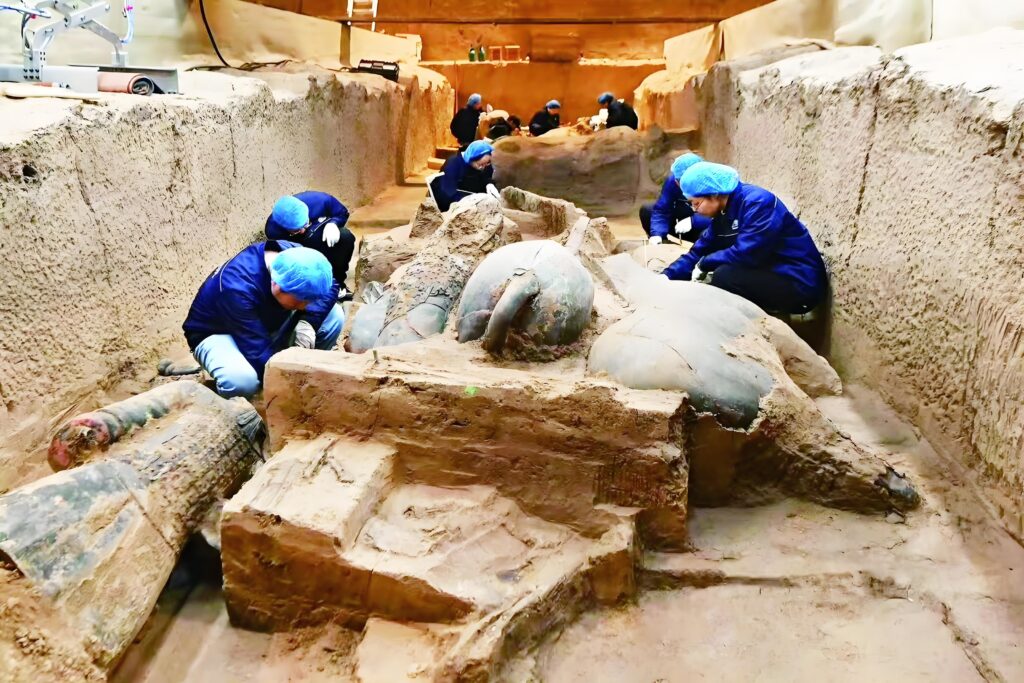
Final Thoughts: Bridging the Past and Present
These three facts about the Terracotta Army—its once vibrant colors, its massive organization modeled after a real army, and the shocking discovery that stunned the world—open a window into understanding the Qin Dynasty (over 2,000 years ago). They not only reveal Emperor Qin Shi Huang’s powerful desire to remain an emperor even after death but also showcase the extraordinary technical skills, imagination, and organizational capabilities of ancient Chinese artisans over 2,200 years ago. The terracotta warriors with hair and shoe soles that look like the real thing, the mystery of the faded colors, and the vast yet orderly underground army formation all silently tell us how glorious, complex, and ambitious an ancient civilization could be.
Standing beside the terracotta army pits, gazing at this army that has traversed time, one can almost feel history breathing. It reminds us that great civilizations are often rediscovered unexpectedly. Each discovery offers new insights into humanity’s past and its creativity. This “thousand-year-old underground army” is not only China’s treasure but also a **unique cultural heritage belonging to all humanity.

